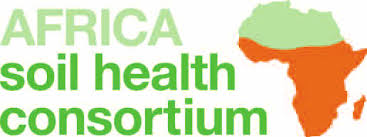GSBI Collaborative Projects
Soil BON
Through the Group on Earth Observations Biodiversity Observation Network (GEO BON), the GSBI together with the German Centre for Integrative Biodiversity Research (iDiv) and a number of other global partners, have worked to establish a primer for a global soil biodiversity observation network (Soil BON). This operational network will be specified and deployed in the near future with an extended number of partners.
Past GSBI Projects
sWORM
Along with the German Centre for Integrative Biodiversity Research (iDiv) the GSBI is working to create a global soil biodiversity database using earthworms as a model group with the goal of develop applications to data synthesis and theory development.
sDIV Workshop:
Diana Wall and Kelly Ramirez of the GSBI have organized a workshop for the Synthesis Centre for Biodiversity Sciences (sDIV). The workshop will be held in April of 2014 at the German Centre for Integrative Biodiversity Research (iDiv) in Leipzig, Germany.
Titled "A framework to improve our understanding of the distribution of global soil, biodiversity: establishing the first quantitative synthesis", the workshop aims to:
1) initiate the synthesis of data on soil biodiversity,
2) outline soil biodiversity distribution knowledge gaps, and
3) identify an action plan.
See our publication: Towards a global platform for linking soil biodiversity data (Frontiers in Ecology & Evolution, 2015).
Participants
Global Soil Biodiversity Atlas:
The Global Soil Biodiversity Initiative (GSBI) and the Joint Research Centre (JRC) of European Commission published the Global Soil Biodiversity Atlas (GSBA). Soil biodiversity experts from all over the world are involved in the project aiming at the creation of a reference publication not only for soil biodiversity researchers but also policy makers and the general public. The first workshop for synthesizing this atlas was held in Fort Collins, CO in February of 2013.
Soil Biodiversity of Central Park:
In July of 2012, the GSBI — in collaboration with the Wall Lab of Colorado State University, the Fierer Lab of the University of Colorado, Boulder, the Bradford Lab of Yale and the American Museum of Natural History — explored the soil biodiversity of Central Park, New York, NY. The group collected over 600 soil samples to map the soil biodiversity of the park. Read more about what we found!
The team
Featured Projects
Soil protists are by far the most diverse eukaryotic microbes in soils. Up to 100,000 protists are estimated to live in a single gram of soil showing their enormous abundance. They are suggested to play key roles in nutrient cycling as major grazers of bacteria, thereby channeling nutrients up the soil food web. Furthermore, soil protists have been shown to profoundly stimulate plant growth indicating an enormous importance for soil and ecosystem functioning.
Nevertheless, knowledge on the diversity, community structure and detailed function of soil protists remain unknown and soil protists remain among the least investigated organisms. Protists are also strongly ignored by soil biologists and terrestrial ecologists and therefore remain a black box in the more general scientific field of soil sciences.
Within our initiative we aim at stimulating research on soil protists in order to bridge the knowledge gaps and transfer this knowledge to a more general audience.
The 1st Soil Protist Symposium took place in June 2016 in Moscow, Russia.
For more information visit the Soil Protist Initiative website or see the protist blog series on Beneath Our Feet, the GSBI blog.
Contact Stefan Geisen (S.Geisen@nioo.knaw.nl) to join.
South American Mycorrhizal Research Network:
Formed in 2017, The South American Mycorrhizal Research Network is a horizontal scientific community directed towards the progress of mycorrhizal applications, research and public outreach in South America. Imitating mycorrhizal networks, which can occupy hundreds of hectares, hopefully this network will cover the entire South American continent and extend abroad. The main activities of this network include: organizing events (symposiums, workshops and so on), diffusing news and opportunities on mycorrhizal research, and connecting local research groups with the hopes of establishing joint research at the regional scale.
To read more, check out their four-part blog series on the GSBI’s blog - Beneath Our Feet.
One year networking South American mycorrhizal research by Dr. César Marín
Earth surface shaping by biota, EarthShape Project, a German-Chilean initiative by Dr. Roverto Goody
Are invasive fungal species always the bad guys in human affected ecosystems by Dr. Marcelo Aloisio Sulzbacher and Dr. Tine Grebenc
Understanding the evolution of the mycorrhizal symbioses: A matter of phylogenetics or paleontology? by Dr. César Marín
Also, see their new paper, “Strengthening mycorrhizal research in South America” published in New Phytologist.
EarthShape project team, Pan de Azúcar National Park, Atacama Desert, Chile. Credit: Leandro Paulino
Araucaria forest, Nahuelbuta National Park, Chile. Credit: Leandro Paulino and César Marín
African Soil Microbiology Project
The African Soil Microbiology Project was launched in October 2016 at the University of Pretoria. It brings together scientists from seven sub-Saharan African countries to undertake a broad-scale survey of soil microbiology across the entire African continent, using the latest next-generation DNA sequencing and computational technologies. The project is funded by USAID. For more information, contact project director Prof. Don Cowan.
The Land-Potential Knowledge System (LandPKS)
Landpotential.org is a global partnership committed to developing and supporting the adoption of freely available technology and tools for sustainable land use management, monitoring, and connecting people across the globe. LandPKS aims to serve as the primary access and development point for free, simple to use, and locally appropriate technologies and knowledge needed for making sustainable land management decisions. The app is available for download at Google Play and the Apple App Store.
LandPKS Version 3.2 now available in four languages (English, French, Spanish, and Swahili) !
Tea Bag Index:
Developed by a team of researchers from the University of Utrecht, The Netherlands Institute of Ecology and the University of Iceland, the Tea Bag Index (TBI) project examines decomposition rates around the world. The project is low cost and utilizes citizen science to expand its implementation. Find out more in a two part series in the GSBI blog.
Establishing an international soil modeling consortium with the aims of:
1) bringing together leading experts in modeling soil processes within all major soil disciplines
2) addressing major scientific gaps in describing key processes and their long term impacts with respect to the different functions and ecosystem services provided by soil,
3) intercomparing soil model performance based on standardized and harmonized data sets,
4) identifying interactions with other relevant platforms related to common data formats, protocols and ontologies,
5) developing new approaches to inverse modeling, calibration, and validation of soil models,
6) integrating soil modeling expertise and state of the art knowledge on soil processes in climate, land surface, ecological, crop and contaminant models, and
7) linking process models with new observation, measurement and data evaluation technologies for mapping and characterizing soil properties across scales.
GLUSEEN:
The University of Helsinki has recently initiated a study as part of GLUSEEN, or the Global Urban Soil Ecological Education Network. The study will look into the effects that urban environmental changes have on decomposition and soil community structure.
Life Under Your Feet:
Life Under Your Feet provides soil ecology information, education materials and live research data. They are currently collecting data from a network of wireless sensors measuring the environmental conditions in the soil.
UniEuk
Universal taxonomic framework and integrated reference gene databases for Eukaryotic biology, ecology, and evolution, including soil eukaryotes.
Census of Soil Invertebrates:
At the fifth International Oligochaeta Taxonomy Meeting (IOTM) in 2011, Robert J. Blakemore presented a call for the Census of Soil Invertebrates (COSI). The consensus will provide a central registry for soil fauna. Preliminary attempts to provide a soil fauna matrix were presented in 2007 and a compilation resource on earthworms is freely available online.
Africa Soil Health Consortium
The Africa Soil Health Consortium (ASHC) is a project managed by CABI and supported by the Bill and Melinda Gates Foundation. It aims to improve the livelihoods of smallholder farmers through better access to practical information about integrated soil fertility management. ASHC has been doing this by working with partners as a free consultancy service to develop targeted communication materials.
Map of Life
Map of Life allows users to examine global biodiversity across all scales in all ecosystems.
Past Featured Projects:
Soils host a huge biodiversity (microbes and fauna) of which our understanding remains very limited. Our lack of knowledge is related to: the small size of the soil borne organisms; their immense diversity; the difficulty in isolating them; and the great heterogeneity of their habitats across different scales. However, recent progress in the molecular characterization of soil biodiversity offers the exciting prospect of exploring its complexity and better understanding its functioning.
As stated, "The EcoFINDERS (Ecological Function and Biodiversity Indicators in European Soils) project will result in:
at the scientific level, increasing our knowledge of soil biodiversity and its role in ecosystem services across different soils, climate types and land uses
at the technological level, the standardization of methods and operating procedures for characterizing soil biodiversity and functioning, and the development of bioindicators
at the economic level, the assessment of the added value brought by cost-effective bioindicators, and of cost effectiveness of alternative ecosystem service maintenance policies."
This project ran and was active from January 1,2011 to December 31st, 2014.
To find out more click here, and check out a post from the Ecofinders team in the GSBI Blog.





















